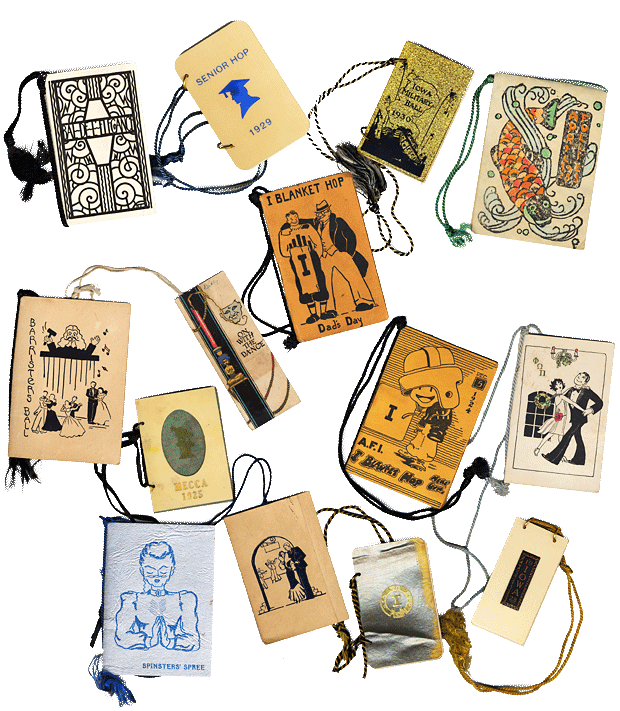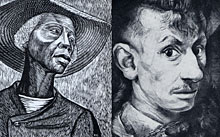-
Page Navigation Links:
- Skip to Site Navigation Links
- Skip to Features

- The University of Iowa
- Spectator
- Monthly News for UI Alumni and Friends

Occasionally the University Archives receives a collection from a donor that stands out for any of a host of reasons: its uniqueness, its artistry, its variety. Perhaps the collection reflects a long-forgotten but charming custom, or offers a glimpse into campus life not well documented in our repository—until now.
The Mary Ingram Dance Card Collection hits the bull’s-eye on all counts. A donor from northwest Iowa shipped more than 100 such cards to Old Gold in 2010, and the card set has been added to the archives’ student life collections. Before we admire this collection and its craftsmanship and artistry, though, a brief history lesson is in order.
Dance cards most likely originated at formal balls in Europe during the 18th century, their use becoming widespread in the 19th. A woman attending a ball or formal dance would use the card to record the names of the men with whom she danced. The card could be accompanied by a small pencil for the convenience of the signer. At evening’s end, the woman could save the card as a keepsake of the event.
By the late 19th century, dance cards reached U.S. soil, persisting into the 1950s. The card was usually a booklet featuring a decorative cover, listing dance titles followed by a blank line on which the guest dancer could sign. Some of the designs and materials were quite elaborate, as evidenced in the Ingram collection. Paper and cardboard were common materials, but so were metal, laminates, plastic, velvet, and leather.
The Ingram collection spans three decades, from the time of the Great War (1918) to post-World War II (1947). Nearly all of the events depicted in the cards were held at the State University of Iowa, as our campus was known at the time. The designs, materials, and events described in the individual cards reflect social mores of the times, and the set serves as a fascinating barometer of student life.
Old Gold is hard-pressed to pick a favorite from the collection, but for pure “I-ness” he appreciates the I-Blanket Hop for Dad’s Day card, 1928. Do you have any favorites from below?
—David McCartney, University Archivist
 Mary Ingram Dance Card Collection (RG 02.04.02), University Archives, Deptartment of Special Collections, University of Iowa Libraries
Mary Ingram Dance Card Collection (RG 02.04.02), University Archives, Deptartment of Special Collections, University of Iowa Libraries
NEXT MONTH:
Remembering Mauricio Lasansky and Elizabeth Catlett:
Two pillars of the arts

Source—Elizabeth Catlett’s Sharecropper, 1968 [Folder “Catlett, Elizabeth,” Alumni and Former Students Vertical File Collection (RG 01.15.01), University Archives, Special Collections, UI Libraries]; Mauricio Lasansky’s Auto Retrato, 1943 [Folder “Lasansky, Mauricio,” Staff and Faculty Vertical File Collection (RG 01.15.03), University Archives, Special Collections, UI Libraries]
If you’ve got memories to share, please send them to Spectator and we’ll run some next month.
Previous Old Gold editions:
© The University of Iowa 2009